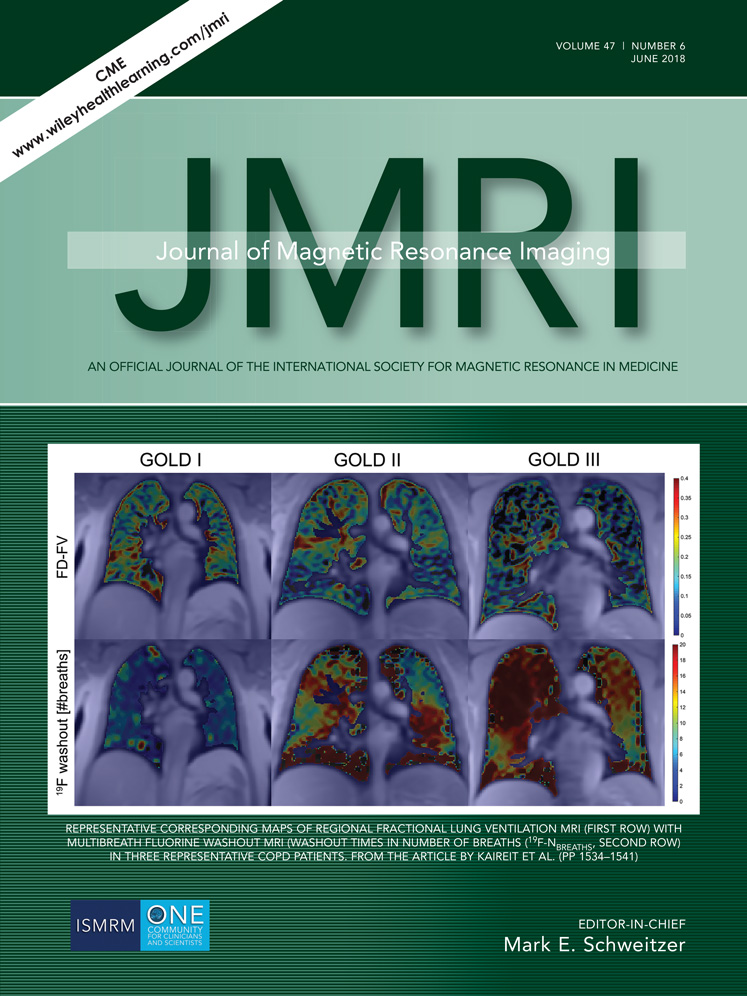Differential brainstem atrophy patterns in multiple sclerosis and neuromyelitis optica spectrum disorders
Abstract
Background
Multiple sclerosis (MS) and neuromyelitis optica spectrum disorders (NMOSD) are central nervous system (CNS) inflammatory demyelinating disorders. It is clinically important to distinguish MS from NMOSD, as treatment and prognosis differ. Brainstem involvement is common in both disorders.
Purpose
To investigate whether the patterns of brainstem atrophy on volumetric analysis in MS and NMOSD were different and correlated with clinical disability.
Study Type
Case–control cross-sectional study.
Subjects
In all, 17 MS, 13 NMOSD, and 18 healthy control (HC) subjects were studied.
Field Strength/Sequence
T1-weighted and T2w spin-echo images were acquired with a 3T scanner.
Assessment
Semiautomated segmentation and volumetric measurement of brainstem regions were performed. Anatomical information was obtained from whole brain T1w images using a 3D magnetization-prepared rapid gradient-echo (MPRAGE) imaging sequence (TR/TE/T: 7.0/3.2/800 msec, voxel size: 1 × 1 × 1 mm3, scan time: 10 min 41 sec).
Statistical Tests
Independent samples t-test, Mann–Whitney U-test, partial correlation, and multiple regression analysis.
Results
Baseline characteristics were similar across the three groups, without significant difference in disease duration (P = 0.354) and EDSS score (P = 0.159) between MS and NMOSD subjects. Compared to HC, MS subjects had significantly smaller normalized whole brainstem (−5.2%, P = 0.027), midbrain (−8.3%, P = 0.0001), and pons volumes (−5.9%, P = 0.048), while only the normalized medulla volume was significantly smaller in NMOSD subjects compared to HC (−8.5% vs. HC, P = 0.024). Normalized midbrain volume was significantly smaller in MS compared to NMOSD subjects (−5.0%, P = 0.014), whereas normalized medulla volume was significantly smaller in NMOSD compared to MS subjects (−8.1%, P = 0.032). Partial correlations and multiple regression analysis revealed that smaller normalized whole brainstem, pons, and medulla oblongata volumes were associated with greater disability on the Expanded Disability Status Scale (EDSS), Functional System Score (FSS)-brainstem and FSS-cerebellar in NMOSD subjects.
Data Conclusion
Differential patterns of brainstem atrophy were observed, with the midbrain being most severely affected followed by pons in MS, whereas only the medulla oblongata was affected in NMOSD.
Level of Evidence: 2
Technical Efficacy: Stage 3
J. Magn. Reson. Imaging 2018;47:1601–1609.
Conflict of Interest
On behalf of all authors, the corresponding author states that there are no conflicts of interest.




